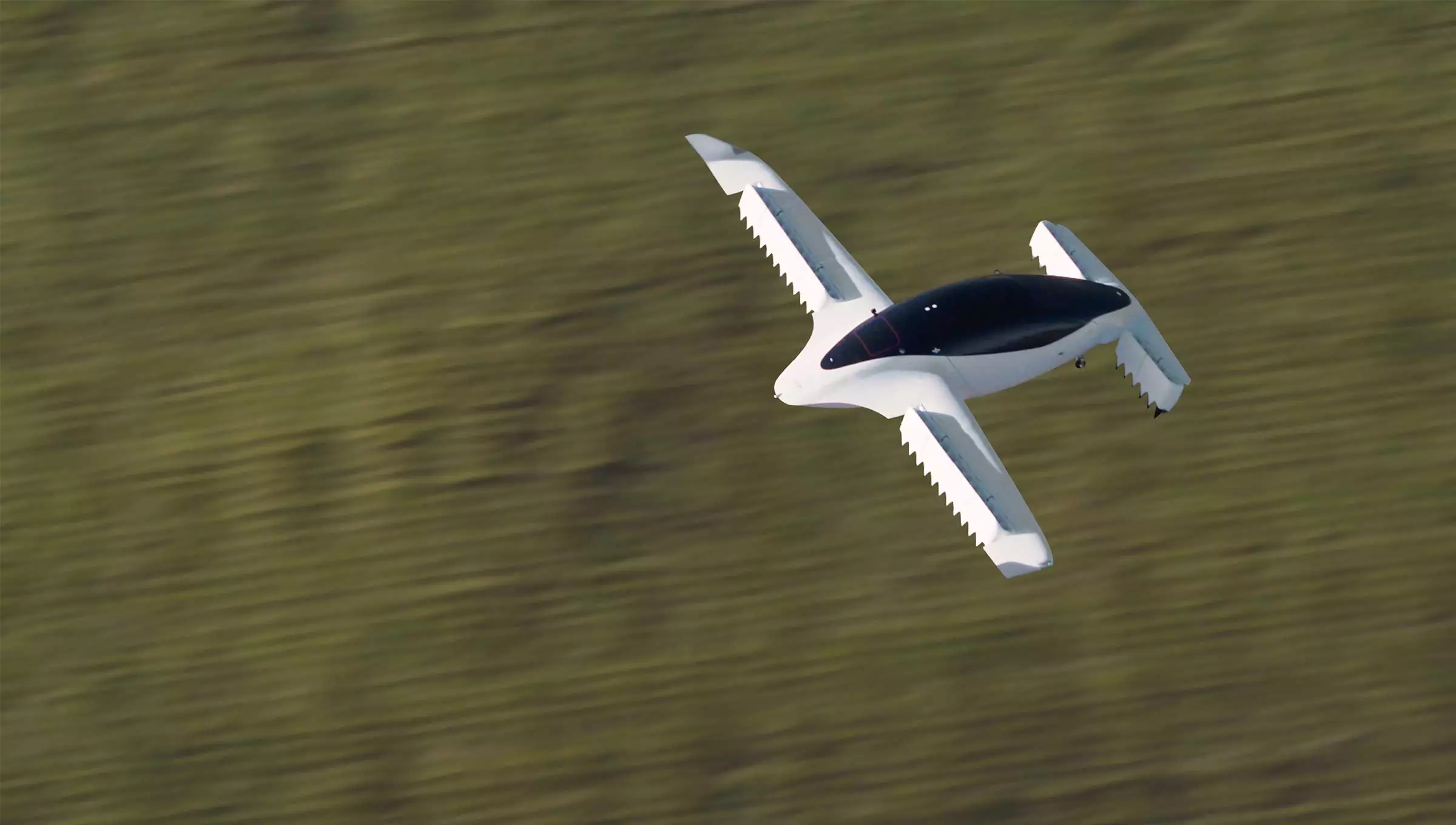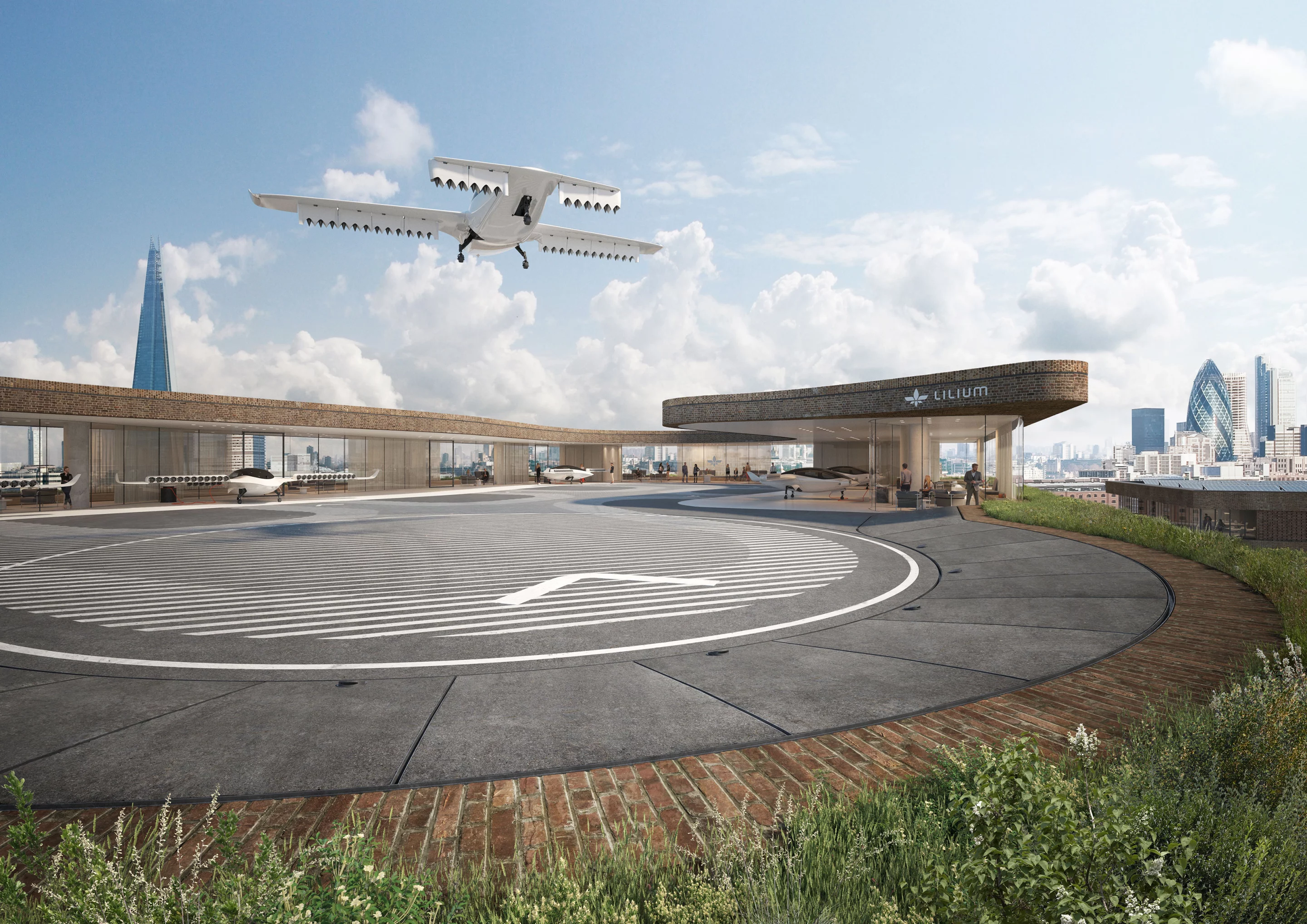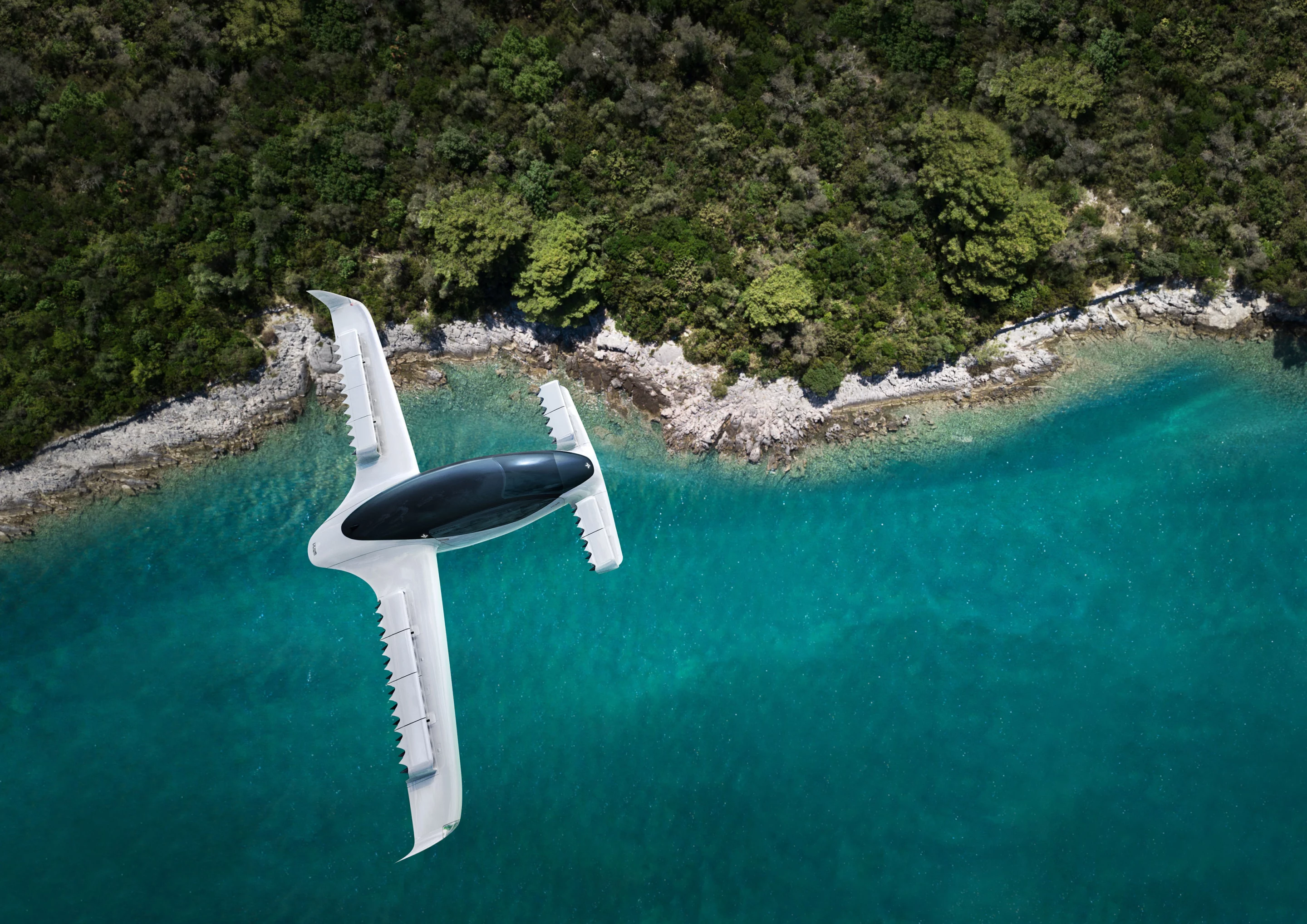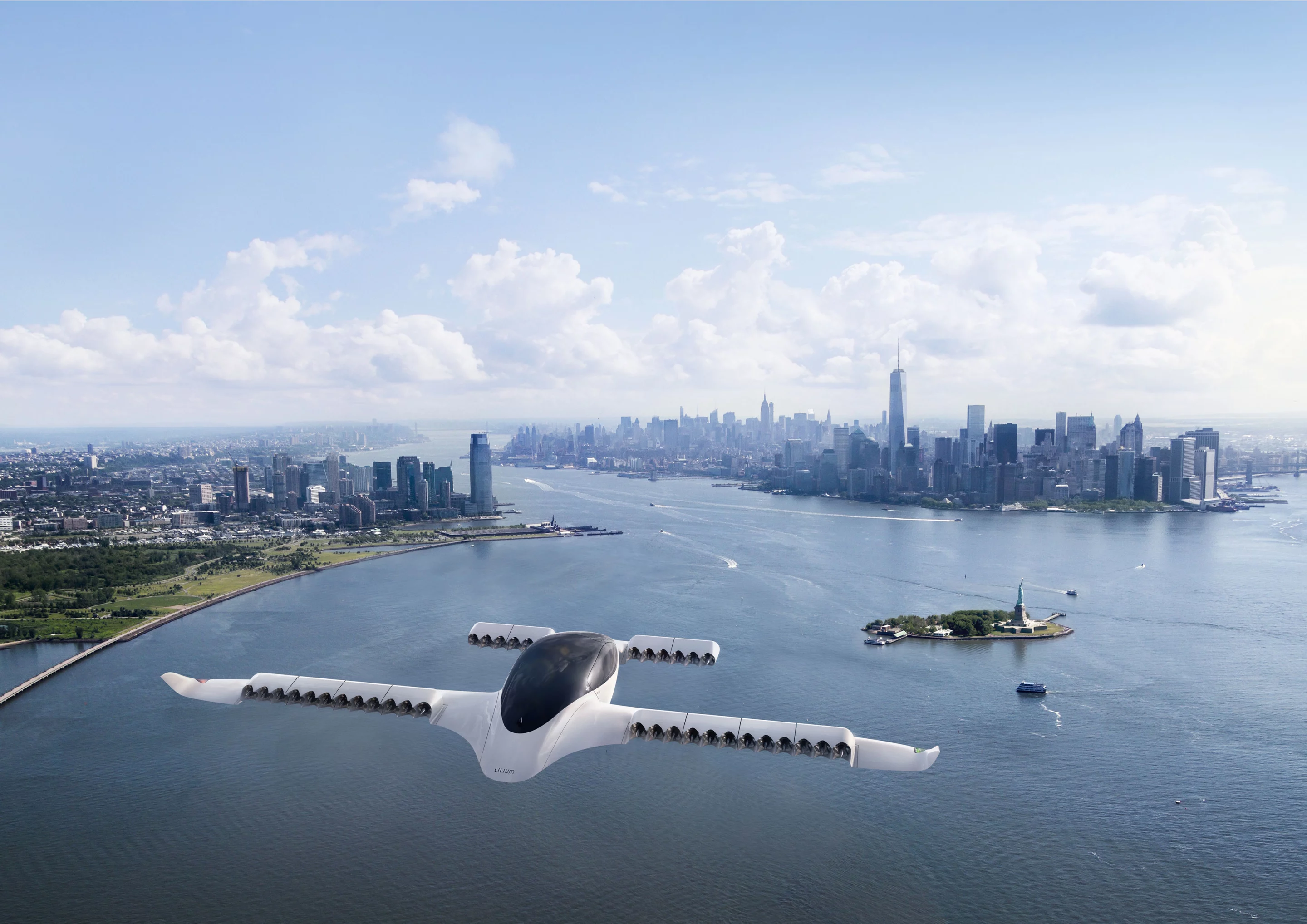The dream of three-dimensional commuting is slowly coming closer, with a number of companies well into the test phase with various electric VTOL air taxi designs that will soon begin offering point-to-point flights far, far more cheaply than helicopters have been able to deliver – as well as being cleaner and quieter.
Leaders in the field would include Germany's Lilium and Volocopter, secretive Californian company Joby Aviation, Google co-founder Larry Page's Kitty Hawk startup, and Vahana, which is funded by Airbus. A potential disruptor has popped up recently in the form of US-East-Coast-based Alakai Skai, which is making a multicopter air taxi that uses liquid hydrogen fuel instead of lithium batteries, potentially offering a huge range and endurance advantage.
Each has its own take on aircraft and service design, but all are working toward the ultimate goal of putting electric aviation into the commuting mix – and all are promising Uber-equivalent per-mile prices that'll make them affordable for a much wider range of people than helicopters have ever been.
Lilium, riding on a US$100-million-plus wave of investment, notably from China's Tencent conglomerate, has been a hive of activity in the last few years, leaping from 70 employees in 2017 to more than 350 today. It has opened one manufacturing plant for its electric VTOL jets, and is building another, and it's hiring like mad with 150 jobs on the board right now and up to 500 more to come when the new manufacturing facility comes on line.

Its aircraft is a five-seater in curvaceous white, rocking 36 small electric jets, arranged on tilting banks along thin wings at the front and rear. With those jets pointed down, 2,000-odd horsepower is available to lift or land the aircraft vertically. Once aloft, they tilt forward, and at cruise speeds up to 300 km/h (186 mph), the Lilium gets most of its lift from its wings, making it highly energy-efficient. Using current battery tech, the company claims a range of 300 km (186 mi) per charge from the onboard battery pack.
We spoke to Lilium's Head of Communications, Oliver Walker-Jones, about the company's recent test flights, its next steps, eVTOL safety, infrastructure, the eventual Lilium service and how these air taxis will begin to infiltrate our daily lives. What follows is an edited transcript.
Loz: So you've got the five-seater flying, what are the next steps?
This was phase one of testing, just proving it could do what we thought it could do in simulation. Vertical takeoff, transition to horizontal flight, turn left and right, do a spin on the spot, a few side slipping maneuvers. Basically, the controllability of the aircraft was what we were testing for.
So we only made it up to 100 km/h (62 mph) this time. Where we go from here is that we start to do the fun stuff. The high speed maneuvering. The expected top speed is 300 km/h, with a range of 300 km. So it's time to put the pedal down a little bit.
One fun part about that is that we'll get to start leaving the environment of our test airport. It'll still be unmanned, we're flying it remotely from the ground. We do that on purpose because it's the safest way to do testing.

Obviously at some point, maybe 18 months, two years, we'll need to put somebody in the aircraft in order to get certified. But for now while we can, we keep it remote controlled.
We'll also be doing a lot more of the safety testing, which is obviously required for certification. Some of that's on the ground, some is in the air, but basically it's about learning what happens when parts fail.
We've already done some engines and some flaps on the aircraft, but we need to go to more serious failure modes. Now, the aircraft is packed with redundancies, so in real life we hope it doesn't happen, but of course you have to test for it.
Loz: Yes. How fast does the jet need to be going before it can effectively glide to a safe landing?
Well, I think in order to catch a real glide slope you're talking at least 50, 60 km/h (31, 37 mph). But the point we'd make at this stage is that when you consider how it's designed, it's designed to have multiple layers of redundancy in it.
There are 36 engines, so if one fails, you've still got 35. If 10 fail, you've still got 26. Same as the flaps – there are 12 of them, so if one fails, there's still 11. The chance of ever needing the facility of gliding is low. It's not designed to do that, and we're not requiring it to do that, and we won't rely on it.
Similarly to other aircraft, it'll have a ballistic parachute if necessary, so the aircraft will be carried to the ground in those situations by parachute rather than relying on it gliding.
Loz: So then you've got this "death zone" problem below about 100-odd meters, below which a ballistic 'chute can't open in time … is solving that problem a barrier to certification?
No, I don't think so. We can't reveal what we're working on there, but obviously, dealing with any situation where there's unpredictability is required for certification. You have to be able to prove you're safe in every instance.
I don't think we see any barriers to certification at the moment, other than time and the maturity of the organization. That is, you have to prove you can put all the right systems and document control mechanisms in place, and you have all the right people and experts. But we see a pretty clear path towards certification, and actually the regulators are being very supportive so far. Spending time with us, understanding how we're going, giving us advice.

Loz: A 300-km range, using lithium batteries … is that with five passengers?
Yes, well, four and a pilot. Five people.
Loz: Right. In terms of kilowatt-hours, do you know what kind of battery storage you're talking about there?
I do (laughs), but we don't talk about it! The way that we talk about it is that using today's off-the-shelf technology, batteries we can get today, we wrap them up into cells ourselves, and we're confident that we can deliver 300 km today. Hopefully the batteries will get better. It's not so different from what a family five-seater car would need to carry.
It's only during takeoff and landing that we need to use energy intensely, because that's the only time you're holding the weight of the aircraft. But as soon as you transition to horizontal flight, the wings give you lift and you're only using about 10 percent of your power. It's not like a multicopter, which has to hold itself up at all times under power.
So in terms of kilowatt hours, we don't give a specific number. We may someday.
Loz: I guess it doesn't really matter at this stage, it'll depend on what batteries are like when the service is ready to launch.
Yeah. Look, the energy usage per seat is roughly the equivalent of a similarly sized electric car.
Loz: Fascinating. Has there been any discussion about hydrogen?
No. There's a couple of reasons for that. I think the guys at Alakai Skai are talking about hydrogen. The way we look at competition, and alternative ideas in this sector is that everything is welcome, and it's cool to see everyone doing different stuff.
But we're trying to have a very realistic time scale – that's why we're talking about 2025 rather than some of our friends talking about 2022 or 23. Central to a realistic timeline is technology that exists and is proven to some extent.
The reason we haven't looked at hydrogen yet is that lithium is there. We know we can use it, and we want to get on with doing it rather than waiting for technology to improve. We can do what we want with lithium. Hydrogen is cool, but it's not for us just yet.

Loz: Really? It was my understanding that the fuel cell stuff was pretty well proven, particularly in the Japanese and Korean auto area, they've got a lot of experience with that gear.
Yeah, and in aerospace. The Dreamliner uses a lot of lithium batteries. It's not unproven. Now, there was some issues with the lithium melting on the Dreamliner, but the regulators have done a lot of work with lithium in the air, and how it works and what you can do with it. It'll make certification easier than it would with something nobody really understands like hydrogen.
Loz: I guess the energy density thing is less of an issue for you guys than others, because you've got the advantage of the transitioning winged flight design. In terms of setting up some sort of infrastructure for this to work under, I guess everyone has this idea that these things will be landing on the tops of buildings, in parks, and whatever. What's Lilium's involvement with the ecosystem these things will have to operate in?
We're trying to be clear that this isn't something you'll be using to go 5 km (3 mi) across the city. We see the market opportunity as journeys from 40-50 km (25-30 mi) up to 300. If you think about it more like that, you'll need fewer pads across a city. You won't need one on every block. You just need a few you can hop between.
The time you save on even a shorter journey is enough that you won't mind taking some other last mile solution if the landing pad isn't right on top of where you're going.
That has a couple of advantages. Obviously, it'll be easier for public acceptance if you've only got them landing in four or five places. And it means you don't have the infrastructure cost of delivering pads everywhere. We don't think we'll ever be in a position where you'd land this in your garden. You'll always go to an aerodrome hub, something like today's heliports, that'll have a charging position.
It'll be shared by lots of people, so it'd make sense to put it somewhere very accessible, like on top of a train station. In terms of the role we're playing, we're expecting to work with lots of different people to start delivering it. We'll be working with those partners to work out where we can place them.

We obviously want to be pretty heavily involved in the specification of it, and what it'll look like. That'd be great if it could be shared across the sector so lots of people can use them, we don't see them as being just for our aircraft.
We're in conversation with a lot of people about where we can put them, and those conversations are going well, so it's one of those areas where the solution is pretty clear. It's pretty much like a heliport is today, but usually smaller. One little bit of technology to tell the aircraft where the helipad is, and then off you go! You can use existing helipads, too.
Loz: So, in terms of timeframe, you're talking about 2025 before passenger flights begin?
Yep. The idea is that by 2025 we expect to be fully commercially operational in two or three cities or regions around the world. We'll have a service that people can download an app and get on.
In reality, we talk about it like a ride hailing solution, but in the first few years it'll be more of a shuttle route sort of thing. But we want it to be a meaningful service by 2025, not just one aircraft doing a demonstration across a small area. We're talking about enough aircraft to be considered a genuine transport network between two or three or four different locations.
Loz: And your model is to keep control of that fleet yourselves? Or will you be selling to, for example, your Uber Elevates and whatnot?
Our plan is absolutely that we would not only manufacture the aircraft, but that we'd operate it ourselves. The whole flight will be a Lilium experience. We'd maintain control of that rather than selling them.
Loz: I guess there might be an advantage to be had in the through-booking of that last-mile stuff at either end?
That's definitely possible. We're looking at whether there might be a way to do that as well. I don't think we'd necessarily take responsibility for it, but we might connect with other people that can deliver it. We'd love to create point-to-point connectivity, but the reality is that over 50-300 km, the time saving will be enough that the last mile won't be a burden for you. We'll have saved you an hour.
Loz: So you guys are calling your motors "electric jets." What's the difference between those and ducted fans?
Both are broadly correct. Ducted fans is the engineering description of what powers the aircraft. The jet engine thing is kind of interesting. There's a general assumption in 2019 that if you're calling something a jet engine, it has to have combustion in it. That's what jet engines have always been.
But the simplest definition of a jet engine is something that takes air in at the front, condenses it somehow, compresses it, speeds it up and spits it out as a jet, providing propulsion. You can use an electric motor to compress the air and do that.

We'd like to think that we're redefining the jet engine for the 21st century into something that doesn't involve burning dinosaurs, but lots of people disagree with me and prefer that we use "ducted fans," which is also technically correct.
Loz: I guess it might also be a better way to describe the sound you'll get out of those small props too, yeah? A similar sort of sound to a turbine.
Yeah. We're able to capture and dissipate a lot of the noise before it leaves the engine, too. It's one of the ways we're managing to keep the aircraft quiet for use over urban areas.
Loz: Do you have a decibel level you're aiming for?
We do, but we don't share it yet. Our aim is to be quiet enough to operate in urban environments and blend into the typical background noise in a city. That makes you six to seven times quieter than a helicopter, and our performance would be in line or hopefully better than any of our competitors.
If you think about normal city noise, you're talking about 65-70 decibels, so we'd want to blend into that soundscape. We'll be sharing more about that in the weeks and months ahead.
One problem we've had so far is people complaining that our videos have no sound in them. But right now we're filming from 200 m (650 ft) away. You wouldn't hear it anyway. But we need to find ways to communicate that better as we go.
Loz: Piloted vs. autonomous, what's your position on that?
We have an autonomous team working with us already. The guy who was working on autonomous driving for Audi came to work for us and set up a team. We're working towards it.
We anticipate that by 2025, we'll have an aircraft that'll be capable of autonomous flight. However, regulation won't be there, nor will public acceptance of it. We can see that following in five to 10 years. We're not in a hurry to do it, our business case works nicely anyway with four seats and a pilot. It's more of a challenge for people who have just the one passenger seat, they could really do without the pilot, but it's less of an issue for us.
We want it to happen, but it'll take time.
Source: Lilium

















